
48 hours with the Jerusalem Division
|
The Israel Antiquities Authority (IAA) is the leading organization in Israel devoted to safeguarding the country's archaeological heritage. Some 400 strong, the IAA staff upholds its complex Antiquities Law through a variety of departments, ranging from Art Conservation to Robbery Prevention. About half of those working at the IAA are archaeologists who excavate throughout the country in different departments organized by region: north, south, center, and Jerusalem. In addition, the IAA's marine branch deals with the coast, the Sea of Galilee, and the Dead Sea. In June 2009, I spent two days with the IAA's Jerusalem division, learning about everything from grouting bullet holes in Zion Gate to ambushing tomb looters from the West Bank.—Eti Bonn-Muller |
![[image]](images/eti.gif) ARCHAEOLOGY's online senior editor Eti Bonn-Muller at Jerusalem's Dome of the Rock |
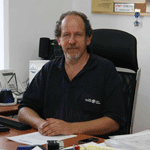 |
Jon Seligman is the IAA's regional archaeologist responsible for Jerusalem and its environs. He helps decide how archaeology "functions" in the 6,000-year-old city, and has the authority to literally move modern buildings. Since 1995, he's been deeply involved in the planning and execution of salvage excavations along the route of Jerusalem's new light railway, which will be completed in late 2010. With an encyclopedic knowledge of the city's archaeology, he's also excavated in its most unique nooks and crannies, including the basement of the Church of the Holy Sepulchre. |
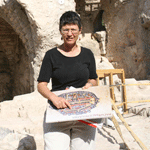 |
Shlomit Weksler-Bdolah is an IAA archaeologist who has been digging in Jerusalem since 1991. She recently codirected excavations with Alexander Onn in the Western Wall Plaza, just 100 meters from the Temple Mount, where a visitor center is to be built. She helped bring spectacular information to light about Aelia Capitolina—as the Roman city named by Emperor Hadrian in his own honor was called—including the development of its eastern Cardo, one of its two grand colonnaded streets. |
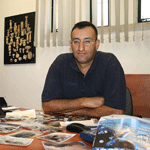 |
Amir Ganor is the director of the IAA's Robbery Prevention Division, which is the unit responsible for catching criminals at every level of the looting "pyramid," as he describes it, from those who illegally excavate to the middlemen to the dealers. The former army officer speaks Arabic and has a background in intelligence. He is also an archaeologist. "There are people who catch looters of drugs and things," he says. "I catch the looters of antiquity." |
 |
Alon—who asked to be identified only by his first name—is part of a special IAA police unit that protects the deserts, valleys, and hills of Judea from looters. During the day, he looks for "clues" such as cigarette butts and bottle caps—anything that might point to illegal activity in the area. At night, the archaeologist ambushes the bad guys. He took me out on his day beat, which he's been patrolling since 1995. Maybe next time I'll be invited for a stakeout. "You wanna come?" he asked with a grin, "Why not?" |
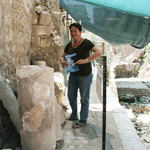 |
Yana Tchekhanovets is an IAA archaeologist who is codirecting excavations with Doron Ben-Ami at a section of the "City of David" site, where it is believed that King David founded Jerusalem as his capital. These salvage excavations, undertaken prior to the construction of a multistory parking lot, are being conducted across the street from the entrance to the well-known Biblical period site. They have already shown that the city surprisingly extended into this area, which used to be used as farmland. They've also illuminated the site's rich history, which dates from the First Temple period to the early Muslim settlement of Jerusalem. |
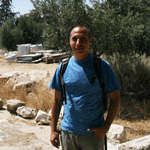 |
Ram Shoeff is an architect and head of the IAA's Planning Department. He is currently part of a team that has been working on a master plan for the Old City of Jerusalem, which is the most ancient part of the city. Divided into Armenian, Christian, Jewish, and Muslim quarters, the Old City is home to some of the world's most sacred religious sites: the Temple Mount, the Church of the Holy Sepulchre, and the Dome of the Rock. Shoeff is also involved with the planning of a museum to house a spectacular Roman mosaic floor discovered in the city of Lod. Originally excavated during the construction of a road in 1996, the mosaic depicts a fantastic menagerie and merchant ships with billowing sails. It was reburied for safekeeping and unearthed again in 2009 for conservation prior to its future reinstallation Lod's new museum. |
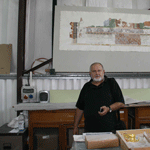 |
Jacques Neguer is the head of the IAA's Art Conservation Department, which houses mosaics and wall paintings from excavations throughout the country. Dating to Herodian, Roman, and Byzantine times, as well as the Early Islamic period, the delicate works of art survive in various states of preservation, from individual tiles to entire floors encased in concrete. He recently conserved the 200-square-meter mosaic floor from Lod, part of which will temporarily be on display at New York's Metropolitan Museum of Art beginning in September 2010. |
Advertisement

Advertisement







